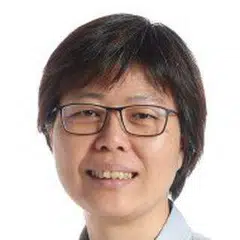Beyond 30 years: History, places and images of Singapore-China relations
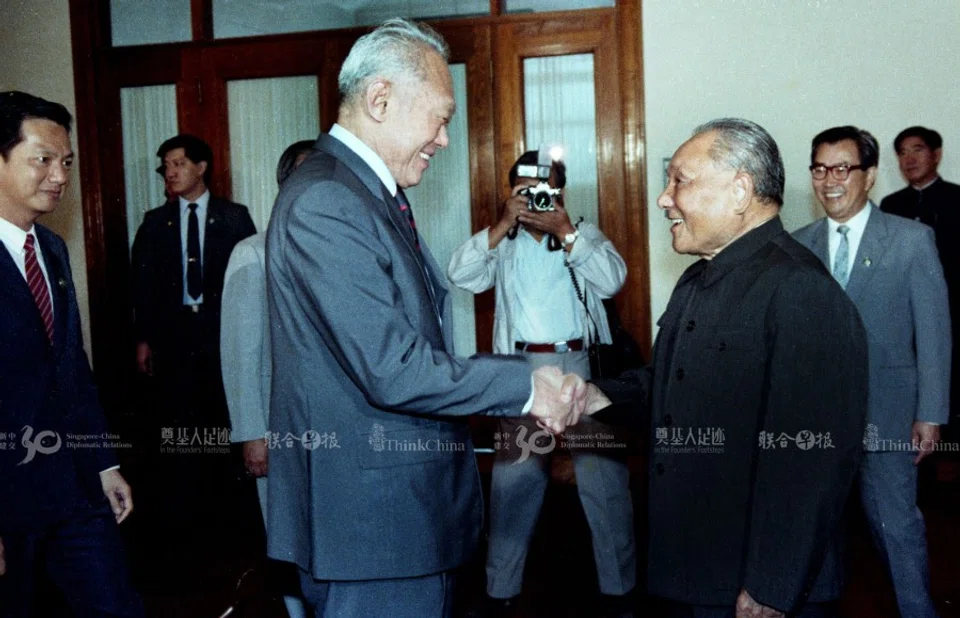
In May 2011, Singapore's founding Prime Minister, Lee Kuan Yew, then Minister Mentor, stepped down from his long-held position as a member of the Cabinet at 87 years of age. The country he visited immediately after that was China, where its leaders granted him high-level access even though he no longer held a Cabinet position.
At the Great Hall of the People, Lee met with Chinese Vice-President Xi Jinping, who called him an "old friend" and "good friend" of the Chinese people. Xi also acknowledged Lee's contributions to Singapore-China relations and lauded him as the Singapore founder and pathfinder of Singapore-China relations.
That was Lee's final visit to China before he passed on in March 2015. On the 25th anniversary of the establishment of diplomatic relations between Singapore and China, Xi, now President, visited Singapore in November 2015. Delivering the 36th Singapore Lecture at the National University of Singapore, he recalled joining Lee in unveiling a commemorative marker in honour of Deng Xiaoping on the banks of the Singapore River in 2010.
In a heartfelt tribute to "two great statesmen who forged this relationship" between Singapore and China, he spoke off the cuff to the audience, saying that the two were great men who thought alike and who recognised and respected each other as equals. "Even though both of them are no longer with us, their great achievements will always be remembered," he said.
A pictorial retrospective
This year, on the 30th anniversary of Singapore-China diplomatic relations, this book, titled In the Founders' Footsteps, tells the story of Deng's 1978 visit to Singapore and of Lee's 33 trips to China. We have chosen a pictorial retrospective, peppered with information and quotes about what was said or discussed at the time, to bring to life the background and global context behind incidents and events, and to give an in-depth and vivid account of those moments. Hopefully, this will allow us to recollect and better understand the depth and extent of Singapore-China diplomatic relations beyond the span of 30 years.
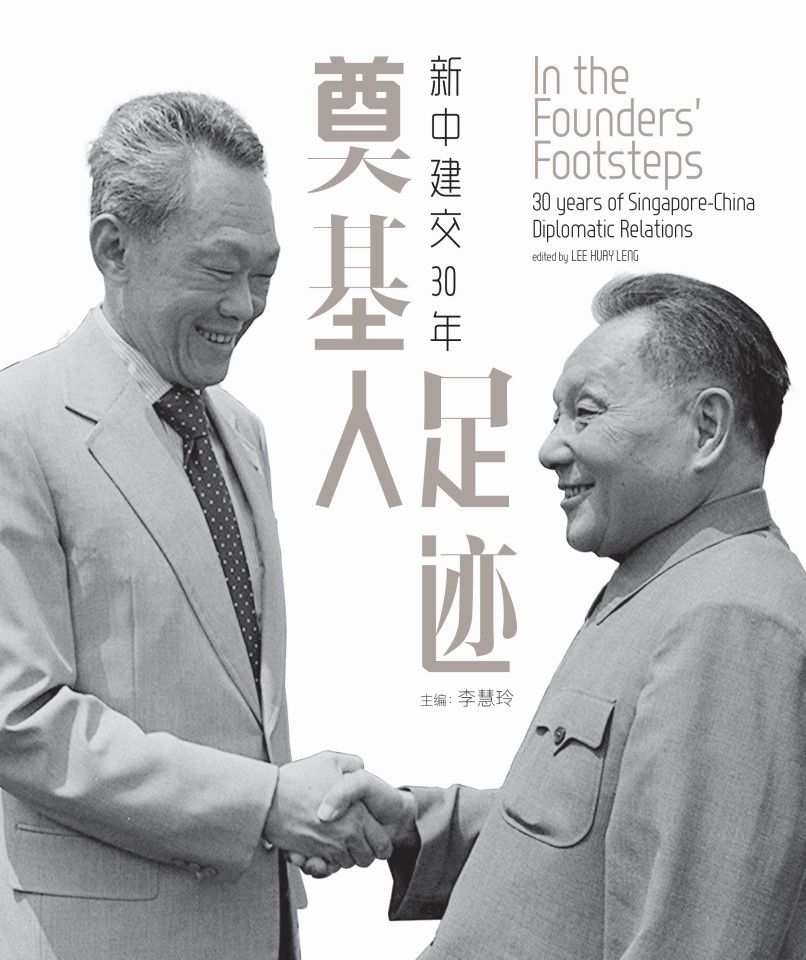
In the 1970s, the international and regional political situation was unstable. In 1975, Singapore's Foreign Minister, S. Rajaratnam, went on a little-mentioned visit to China during which he discussed with Chinese Foreign Minister Qiao Guanhua the right timing to establish Singapore-China diplomatic relations. Singapore's stand was that although it would like to maintain friendly relations with China, it could only establish diplomatic ties after its neighbours had done so.
Chinese Premier Zhou Enlai understood this position, and it was not until 1990, after Indonesia formalised diplomatic relations with China, that the foreign ministers of Singapore and China signed a joint communique establishing diplomatic ties when they were in the US for the UN General Assembly meeting. This was just before Lee stepped down as Singapore's prime minister.
Lee and Deng laid the foundation for Singapore-China diplomatic relations
In this photo book, Lee's visit to China in 1976 is regarded as an important marker of the beginning of Singapore China relations. Through documenting his visit, we hope to present snapshots of Chinese political life at the end of China's Cultural Revolution, and to remind readers of the significant changes that China has gone through in the past 40 years. These developments have led to changing perceptions of both parties and of the scope for bilateral cooperation envisioned.
"The relationship between China and Singapore contains unique elements to which we must address ourselves with frankness. Then there will be no need for ambiguity in our dealings with each other." - Lee Kuan Yew
In 1920, Deng passed through Singapore on his way to study in France. When he came to Singapore again in November 1978, after visiting Thailand and Malaysia, he saw a very different country. It was a short three-day visit, and there was little to see on the tiny island-state. Still, over two rounds of talks, the leaders of both countries exchanged frank views on issues ranging from Vietnam and Cambodia to Southeast Asia and the global situation. Singapore's progress and governance left an impression on Deng. It influenced him in shaping his vision for China, which became even more evident after his "Southern Tour" of 1992.
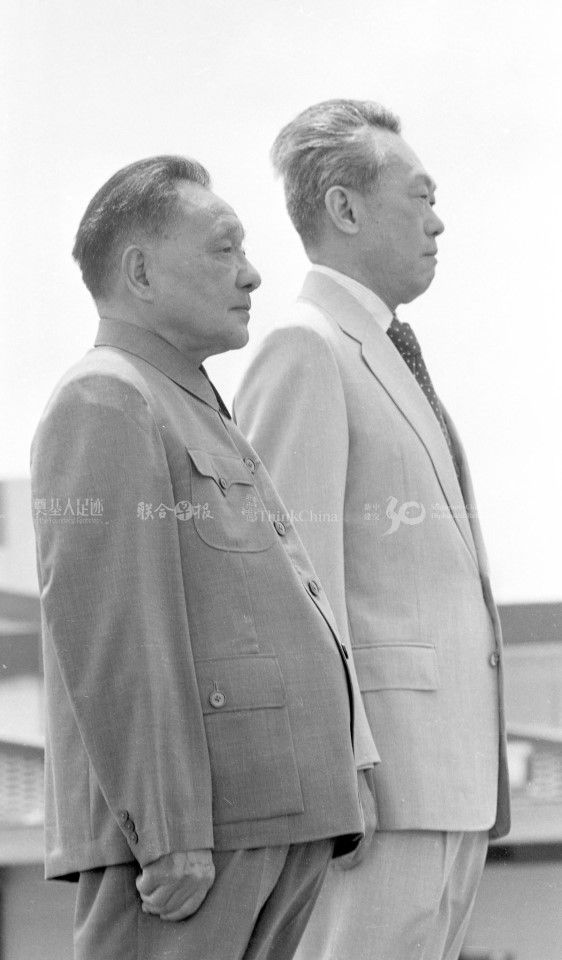
At the dinner during Deng's visit, both he and Lee made compelling speeches. Lee said: "The relationship between China and Singapore contains unique elements to which we must address ourselves with frankness. Then there will be no need for ambiguity in our dealings with each other." Lee went on to say that if their positions had been switched - if Lee's ancestors had stayed in China and Deng's had moved to Singapore - they would have undergone different experiences and histories. Lee said that settling down in Southeast Asia meant that Chinese Singaporeans would see and feel things differently from the Chinese in China.
(Deng) reiterated that China would not seek hegemony - now or in the future - when it becomes powerful, and will never be a superpower that subjects other countries to aggression, interference, control, threats or subversion.
Deng's speech conveyed core Chinese principles that persist to this day.
He said that the Chinese government - which has always maintained that all countries, big or small, should be equal - is firmly opposed to the bullying of small nations by big ones and the domination of weak nations by strong ones. He added: "The way the international situation has developed proves more and more clearly that hegemony is the source of intranquillity in the world, and poses a grave threat to the peace and security of the whole world, including Southeast Asia."
He further stated that the government and people of China are firmly opposed to any country seeking hegemony in any part of the world, and reiterated that China would not seek hegemony - now or in the future - when it becomes powerful, and will never be a superpower that subjects other countries to aggression, interference, control, threats or subversion.
To a China that was just opening its doors and preparing for reform and opening up, Singapore's unique survival model was a worthy reference, and as part of Asia, both countries were similarly concerned about regional and international geopolitics. Despite the disparity in size between Singapore and China, these two issues were prominent from the beginning.
Apart from trade cooperation and cultural exchanges, the foundations for bilateral relations as laid down by Lee and Deng were wide-ranging and substantial. This was why former Deputy Prime Minister Goh Keng Swee was invited by the Chinese government to be an adviser for China's special economic zones after he stepped down from political office.
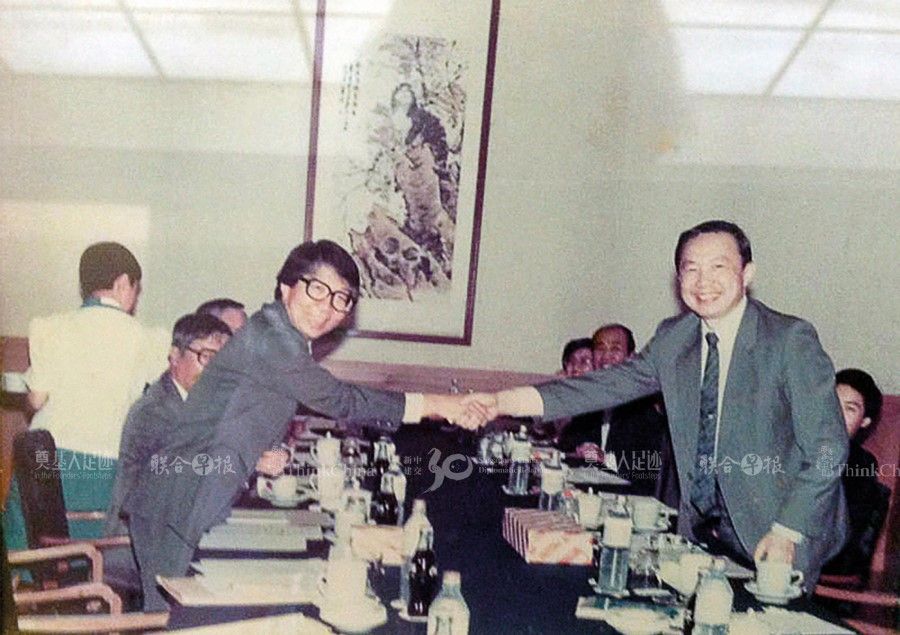
It was also how the Suzhou Industrial Park (SIP) project came about. Described by erstwhile Chinese President Jiang Zemin to be of "paramount priority", the SIP allowed Singapore and China officials to build real, in-depth working relations and contacts. At the same time, thousands of China officials went through training in Singapore.
Following the political storm of the Tiananmen Square incident on 4 June 1989, when the Western world had doubts about China's reform and opening up, Lee spoke up for China, actively advocating bringing it into the international stream of affairs. The historic Wang-Koo summit (high-level meeting between officials from mainland China and Taiwan) was also held in Singapore in 1993.
Lee's 33 visits to China
Lee made 33 trips, the last of which was to Beijing in 2011. This photo book is therefore focused on him, and brings readers back to those historical scenes through his eyes. Many key people or project leaders accompanied Lee and his group to various vantage points across the country. Amid those bird's-eye views, perhaps the locals were the ones who experienced most keenly the changes that took place in their locales.
In selecting the photographs, we were surprised at how widely Lee travelled. Besides Beijing, Shanghai, Guangzhou and Shenzhen, he also went to Liaoning in the northeast, Xinjiang in the northwest, and Sichuan in the southwest, as well as Hainan in China's southernmost tip, and Hubei in central China. Some places he visited more than once - his many trips to Suzhou are understandable. Still, he also repeatedly visited Qingdao in Shandong and Xiamen in Fujian at various stages of their development, witnessing and comparing how they have changed.
In these photographs, we get to see the people and things that he came across - sometimes craftsmen, sometimes artefacts, all of which prompted careful questioning or close scrutiny. These first-hand observations and personal interactions must have formed the basis of his analyses of China, especially in explaining China to the world.
Through these photographs, we also hope to spark readers' interest in finding out more about the stories behind them. In the 1980s, Lee came in contact with the new-generation political leaders in various parts of China. He got an impression of the difference between them and Deng's generation of leaders, and made a firm assessment of China's reform and opening up. In those years, Singapore and China started exploring the possibility of trade exchanges and Singapore businessmen investing in China.
... (Lee) understood China and gave its reform and opening up his vote of confidence.
In the 1990s, Lee continued to play the role of a forthright friend. Besides giving views on how to improve China's system, one key point was that he understood China and gave its reform and opening up his vote of confidence. And on various occasions before Hong Kong's return, he gave his take on Hong Kong's system and leadership planning after its return to China, with insights on how "the last Governor" Chris Patten had set the stage for Hong Kong's future before stepping down.
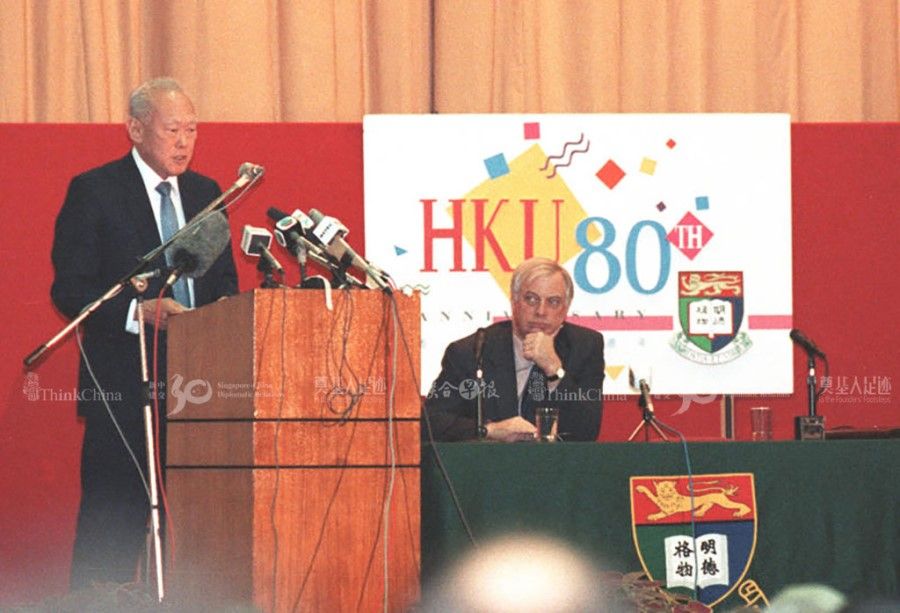
Lee thought that the Western media had no real understanding of China
In May 1993, at an international forum in Shanghai, Lee criticised the Western media for having no real understanding of China, noting that from time to time, it was obsessed with China, and then "building up China as an enormous, gigantic colossus that's going to consume the whole world". He said: "It's not [about] democracy and human rights. It's [about] the vital business of a nation that has been sidelined and marginalised for over 200 years, and now taking stock of itself and breaking loose of its own historic bonds."
(Lee) predicted that in the future, when China became an economic superpower, the world would be in serious trouble if the existing rules and practices did not change.
He predicted that in the future, when China became an economic superpower, the world would be in serious trouble if the existing rules and practices did not change. His wise and visionary words seem particularly prescient today.
As one who paved the way for Singapore-China relations, one who met and shook the hands of China's five top leaders - Mao Zedong, Deng, Jiang, Hu Jintao and Xi - Lee's most visible legacy is the SIP that both countries had put effort into making a model. From 2004, both countries also set up the Joint Council for Bilateral Cooperation, led by Singapore's deputy prime minister and China's vice-premier, as well as several local trade councils, to maintain good communications.
Witnessing China's growing strength in the 21st century, Lee often asked how Singapore could continue to maintain relations and stay relevant to China. When Xi visited Singapore in 2015, he and Singapore Prime Minister Lee Hsien Loong established an "All-Round Cooperative Partnership Progressing with the Times". It signified deepening and widening areas of cooperation, as well as building on the strong foundation laid by our founders who have gone before to open more new and exciting chapters for Singapore-China relations.
. . . . . .
In the Founders' Footsteps is now available for purchase on ZShop in paperback ($38, inclusive of GST) and hardback ($55, inclusive of GST). A special early bird discount of $32.10 for the paperback is available till 15 October. For corporate or bulk orders, please email Focus Publishing, the custom publishing arm of SPH, at focuspub@sph.com.sg. The book will also be available at major bookstores from 3 October 2020 onwards.
Related: Will China also move into the 'post-LKY era'? | What would Lee Kuan Yew make of the China-US trade war? | Singapore and Suzhou: Where will this journey lead us? | China's misperceptions of Singapore | The construction of the Singapore Model in Mainland China | Chinese ambassador to Singapore Hong Xiaoyong: China-Singapore ties tested and strengthened through the pandemic | Singapore and China: Scaling new peaks together | Singapore's ambassador to China Lui Tuck Yew: Singapore must stay relevant to China | Yang Jiechi's Singapore visit: Seeking strategic space
